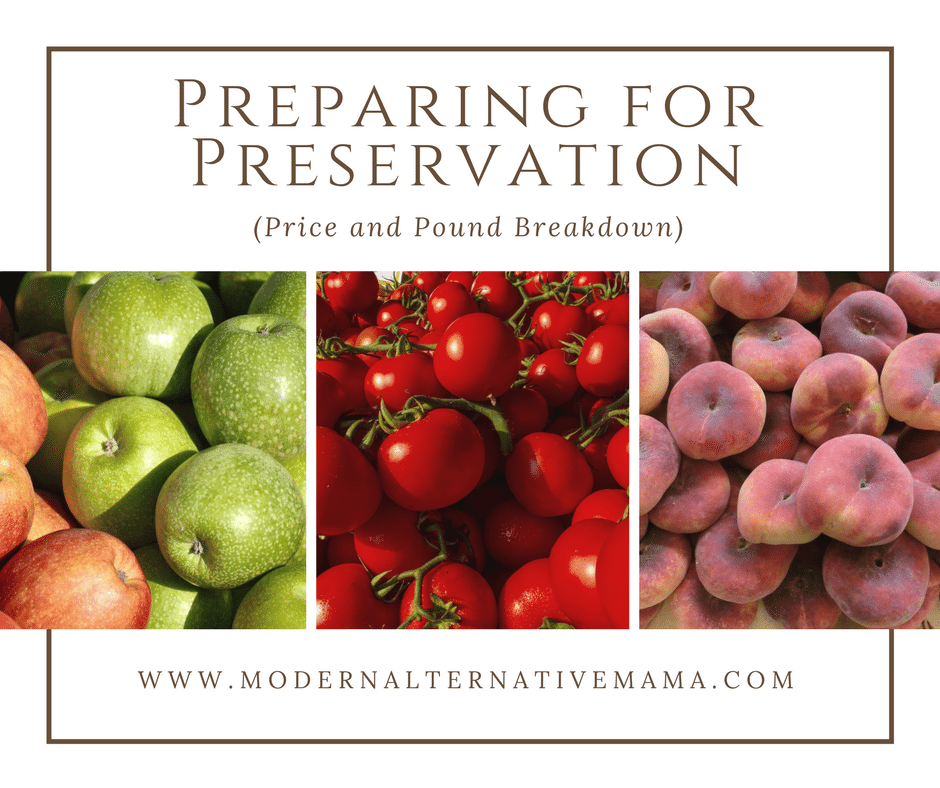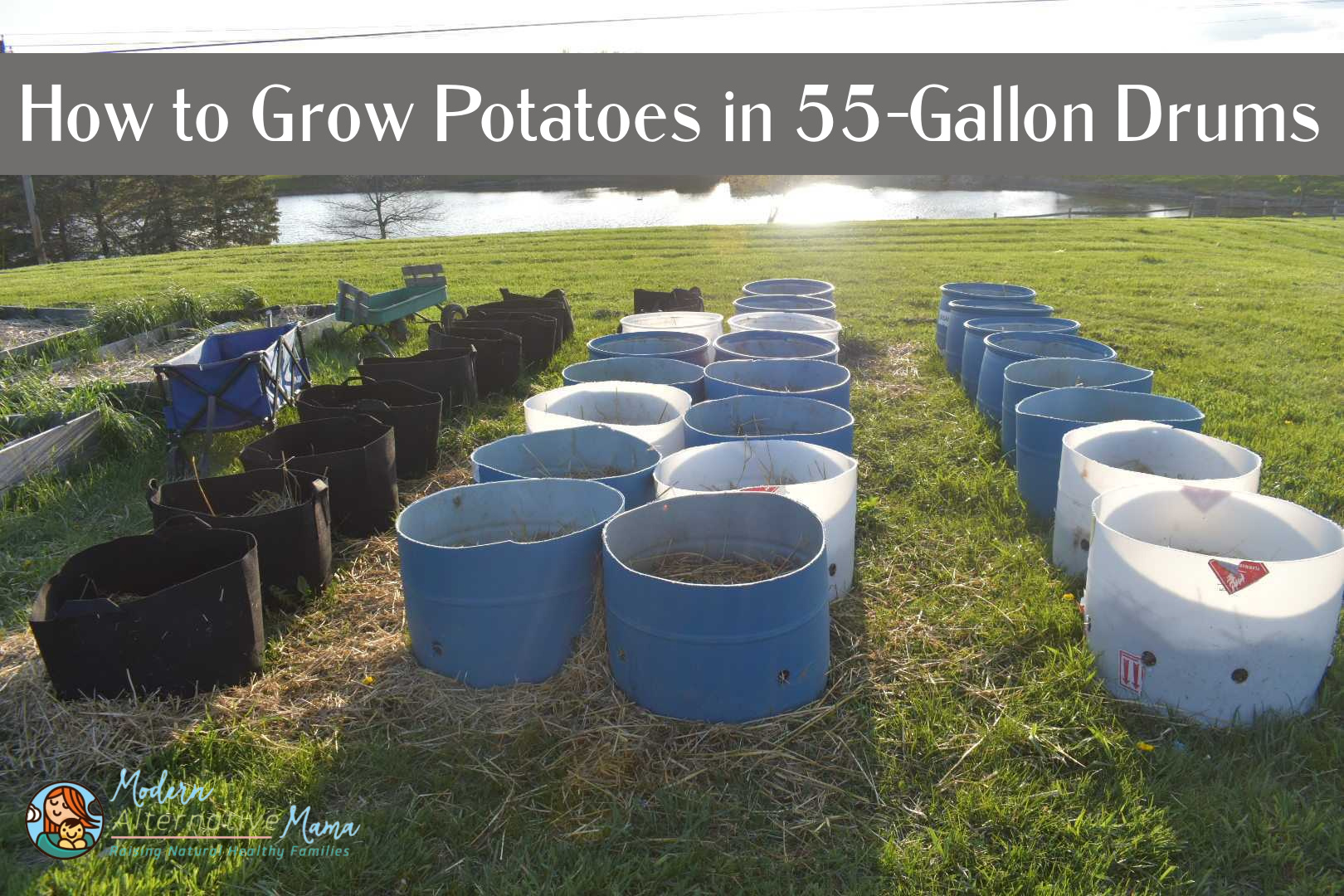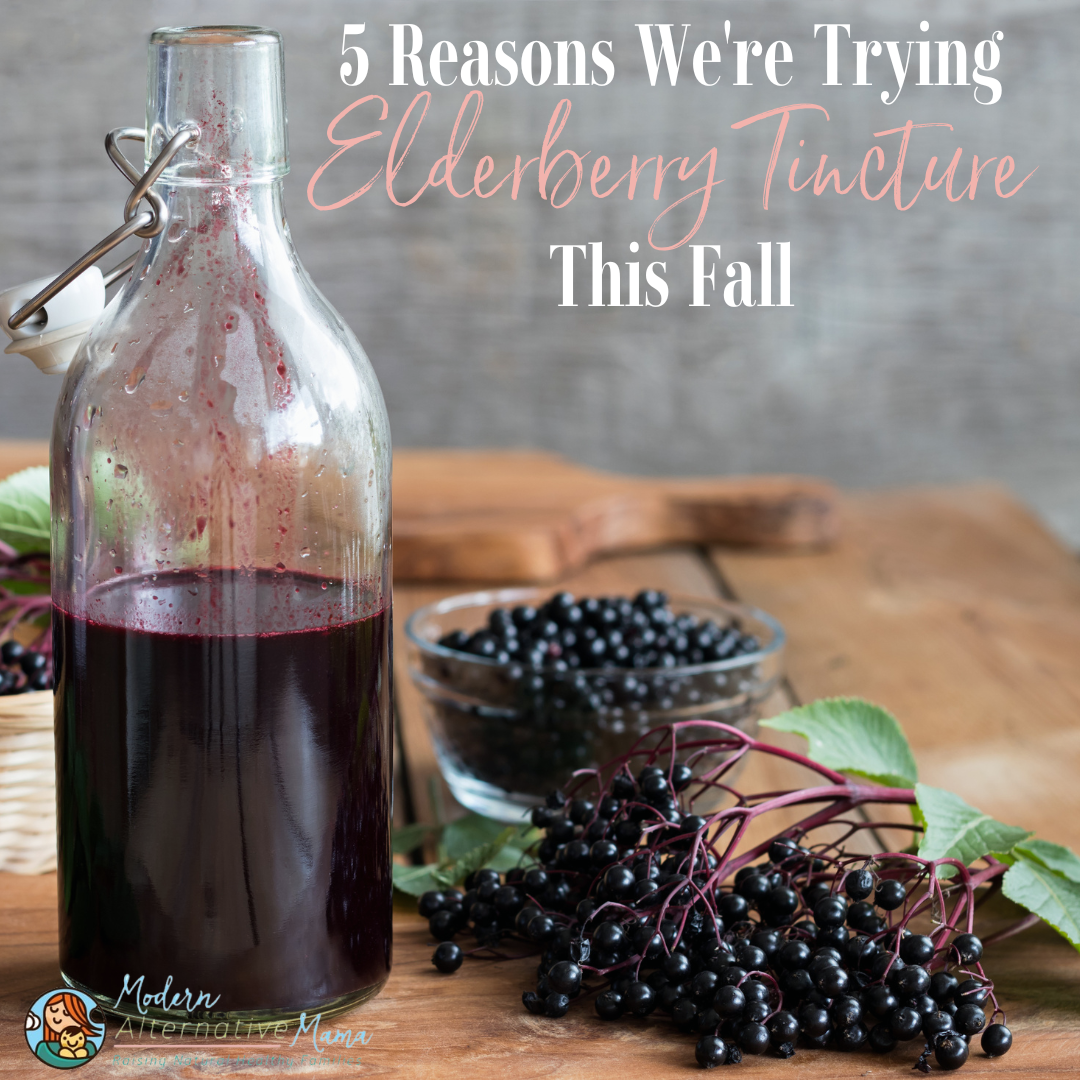It’s that time again…
As the weather starts to warm up, I look forward to all the seasonal foods coming up. I also look forward to preservation season! I like nothing more than feeding my family locally, healthfully, and cheaply. It’s the dream, right? To have it all?
It’s possible. I mean, I’m not realistically going to be able to feed a family of six the quality I want for $300 a month or something. But I can certainly keep it lower than or around the U.S. average of $645 for a family of 6 with young kids (you can check the average for your family size and ages here). I used the “thrifty” plan numbers, by the way, the lowest option. The highest option is nearly double ($1245 for my family)!
A big way I save money is through preservation. In a few cases, it doesn’t save much, but it improves greatly on quality. I am willing to do it for both reasons.
Preserving Cost Breakdown
When I was wanting to start preserving my own food three years ago, I scoured the internet for something that would tell me definitively how much food I would need and how much money I would spend. I really never did find it.
I’m going to attempt to do that here for you, with a few favorite/popular recipes.
Tomato Sauce
I make 90 – 100 quarts per year, so this is my biggest investment, both in time and money. But we use it a lot. It goes in so many of our recipes. My other option of the same quality would be to buy 24-oz. jars of strained tomatoes from Tropical Traditions, for $2.79 each. That would be $3.72/quart, and it’s just the tomatoes — no spices added. I don’t buy in cans because BPA lining. I have not found any organic tomato sauce that does not contain soybean or canola oil or sugar cheaper than that. Most is $4 – $5/quart.
I find tomatoes for $0.50/lb. in the summer time, from a local organic farmer. Onions are about $0.60/lb. and I use one large one for each pot (4 – 5 quarts). I add 2 – 3 cloves garlic, and a few teaspoons of basil. I finish it with a few teaspoons of sea salt. Here’s the recipe.
So, my estimation is this:
- 3 lbs. tomatoes ($1.50)
- 1/4 onion ($0.20)
- 2 cloves garlic ($0.05)
- Spices ($0.25)
- Total = $2.00 per quart
That is almost a 50% savings over buying the strained tomatoes and making sauce (I’d have to add the $0.50 in onions, garlic, and spices to that, as well, so it’s really a greater savings).
Tomatoes are not on the dirty dozen list, so if I happen to go to Amish country in August or September, I have picked up non-organic tomatoes for as little as $0.24/lb. That would make each jar only $1.25.
My total spending on tomato sauce is around $180 – $200. If I went with the cheaper, non-organic tomatoes, that could be $125. For a year’s worth of tomato sauce, that’s pretty good!
Salsa
I decided, last year, to try to imitate the salsa you find in good Mexican restaurants since that is usually the one I like the best. It’s sort of thin, with lots of flavor. I played around in the kitchen and came up with a recipe I love. It includes tomatoes, cilantro, lime, garlic, onion, and salt. I could buy salsa that I like at Costco, organic even, but if I remember correctly it is $3 – $4 per quart.
Here is my breakdown on this:
- 2 lbs. tomatoes ($1)
- 1/8 onion ($0.10)
- 3 cloves garlic ($0.08)
- Cilantro ($0.20)
- Limes ($0.20)
- Sea salt ($0.10)
- Total: $1.68
That’s much cheaper than from the store, and I like it better (and it doesn’t have any sugar, either). I can this in pints, rather than quarts, because I use it primarily on taco salad, which I don’t have often enough to finish a quart before it goes bad. I usually dump about 1 c. on a big salad, so a pint will last two meals. Or, I use it for dipping quesadillas and then it lasts longer.
I do about 12 – 15 pints per year. Total cost is around $12, and I use about 15 lbs. of tomatoes.
Applesauce
In the past, I have made very thick applesauce. It basically it was only apples, I didn’t add any water. It was really thicker than I’d like. This applesauce required about 4 lbs. of apples per quart. I am aiming for 2.5 – 3 lbs. per quart this year to achieve the texture I would like.
I get apples for $0.50 – $0.60 per pound when they are in season. This means that applesauce costs me around $2/quart.
Apples are on the dirty dozen list, but it’s almost impossible to find unsprayed apples in my area. Low-spray is usually my best choice. My best price last year was $0.36/lb. for “seconds.” I could pay 3x as much for “firsts” but why bother, for applesauce?
This year, if I can get that same low price and make the applesauce thinner, I’m looking at a cost of just $1 a quart. Since I make a good 40 – 50 quarts (if possible), that’s $50, or 150 lbs. of apples (nearly 4 bushels).
My cost breakdown for diced pears is really similar to this, too, since I can get the same price on pears (roughly) and it takes about 3 lbs. of pears to fill a jar. I can them the same as I do my peaches (see below).
Apple Pie Filling
I know this isn’t exactly super popular for most, but for us it is. I don’t use it to make pies, I use it to make soaked apple crisp for quick, healthy breakfasts. I only did about 8 jars last year because it wasn’t a great year for apples, but I hope to do a lot more this year. It was such a quick and easy breakfast favorite here.
The pie filling requires apples, nutmeg, cinnamon, cloves, sucanat, arrowroot, and water. Here is my rough breakdown:
- 2 lbs. apples ($1)
- Nutmeg ($0.05)
- Cinnamon ($0.05)
- Cloves ($0.03)
- Sucanat ($0.15)
- Arrowroot ($0.20)
- Total: $1.48
I might spend a bit less if I got my apples cheaper. If I wanted 50 quarts (and I do — that’s apple crisp once a week), I would spend $74. I would need 100 lbs. of apples. For both this and applesauce, I would need approximately 6 bushels of apples.
The apple crisp recipe uses oats, coconut oil, sucanat, and spices. I estimate this adds $0.50 to the meal. So, for about $2, I can feed the 4 (soon to be 5!) of us breakfast. Although these days I also add some potatoes and sausage because we do better with a big breakfast.
Peaches
I really don’t like canned peaches as much as fresh. I do not eat them very often. But, sometimes we enjoy them, so I do a few jars.
Locally, I can get “regular” peaches for $10/peck ($40/bushel or about $1/lb.) and I’ve heard rumors of seconds that are organic for as little as $7/peck ($28/bushel or $0.70/lb.). I buy seconds where I can, but they aren’t always available or in good enough condition to can. Overripe is one thing; moldy is another.
It takes about 3 lbs. of peaches to fill a jar, so I spend about $2 – $3 per quart, depending on whether I get firsts or seconds.
I also slice peaches and freeze them flat on trays, then scoop them into gallon-sized bags. A peck (about 10 lbs.) will fill a couple of gallon-sized bags. These are used mostly for smoothies.
Strawberries and Blueberries
These are much more expensive than above. So far I only freeze them whole, for smoothies or baking. We prefer blueberries, but they are the most expensive of anything we preserve — $2.50/lb. at an organic u-pick place. Strawberries around $2/lb.
My hope is to get 50 lbs. of each this year, which means I’ll be spending $125 and $100, respectively. I simply soak them in vinegar water, dry them, lay them out on trays, and freeze them. Then I scoop them into bags individually and put them in the deep freeze.
I have played around with the idea of jams, jellies, or syrups — but we simply don’t use enough of these to make it worth my time. I like the idea a whole lot more than the reality. When I go to toast my English muffins in the morning, I want butter. I don’t want anything sweet. But, that’s just me. If your family eats a lot of these types of things, I am sure they are cheaper. And jams and jellies do not require a ton of sugar! When I have attempted them, I’ve used very little and have gotten good results.
Affording to Preserve
If I were smart, I’d save money year around. Typically, I am so relieved and excited to be done with preserving season every year that I forget to save anything…until about March, when hits of warmth drift through the air and I suddenly realize I’m going to need money and soon!
I started saving mid-March this time. My goal was $50 per two weeks, and I’ve been actually saving $60. If I keep that up, I will have saved $960 by the end of October, when I finish preserving. Of course, I will have spent most of it.
My goals:
- 400 lbs. of tomatoes = $200 (less if I buy in Amish country)
- 6 bushels of apples = $90
- 50 lbs. blueberries = $125
- 50 lbs. strawberries = $100
- 225 lbs. of pears = $135
- 100 green peppers = $25 (I have seen as cheap as 7/$1 in the height of the season!)
I simply slice the peppers in half, seed them, and freeze like this. Very easy.
My projected total: $675. I’ll save more than enough to do all of this, and a bit more if I can or have the time. I will also continue to save the extra money and set aside the $60 per two weeks through the winter this time.
If I spend what I project, I will have $285 left at the end of the season. Through the winter (Nov – May) I will save an additional $900, meaning I will begin the preservation season with $1185. I would save an additional $660 throughout next summer (May – Oct.).
Supposing I spend about the same next summer as I did this summer, I would have about $1100 left at the end of the season!
So, you can see — if I am setting aside this money all the time, I am saving more every year, allowing my preserving expenses to grow easily while still saving up extra money to be used on bulk purchases or in other areas of our family budget. And if we move this summer like we hope and have a large garden in our new home next year, my preserving costs should drop quite a bit.
(In our first year gardening, we would not be able to produce our own apples, pears, peaches, blueberries, or strawberries in any decent quantity, since they need time to grow and mature before producing a large crop. We should be able to produce all our own tomatoes, peppers, onions, garlic, green beans, broccoli, cauliflower, and a number of other items I don’t yet preserve because it isn’t worth it. It will be when I can grow it. Realistically, I will be spending a lot of that money I’ll have saved on buying fruit trees, organic plants, and other gardening supplies in the first year or two.)
As you see, preserving is a huge part of how I save money on groceries! You can see how I allot the rest of my money and an example of what I buy and what I cook here.
Over the next several weeks, I will be sharing recipes, freezer cooking tips, preservation recipes and tips, and more — all about saving money on quality food!










Why do you add sweetener and arrowroot powder to applesauce? Never heard of adding the arr. powder. Just core and cut up apples, tiny bit of water so they don’t stick, cook till slightly tender, and run through ther squeezo. nothing else is needed so you can save that costs. Put in jars and process acccording to canning method you use. I use hot water bath and you’re done. If you have older applesauce it makes a wonderful quick bread, healthy.
I don’t. 🙂 I add it to the pie filling.
Sorry forgot to add, good post though for those who don’t know anything about canning and preserving.
Nice post. I often wonder how much the total cost is per quart, and if I’m saving money, so it’s nice to see it all down in black and white. I’m not sure if our produce is in line with those numbers, but I’ll have a baseline to compare!
I have not yet begun to preserve produce in bulk simply because I do not have the freezer space at the moment. I do small batches, but not enough to last us through the off seasons. It’s definitely on my to do list, though, so thanks so much for all the information and tips!
Love the cost breakdown! Perfect when you’re wondering, “Is it worth it?!” Hadn’t even considered the BPA lining. Looked into that topic- I guess Campbell’s has been slacking since claiming in 2012 that they would move to BPA-free. (“It’s hard to make the change,” they say…) A few other small companies offer BPA-free, but there’s not much to choose from.
Oh, thought I’d mention, since you said that tomatoes aren’t on the “dirty dozen” list (pesticide-wise). Watch out anyway! Apparently, tomatoes are often genetically modified. So, it would be wise to continue using organic, hey?
Thanks for the informative post!
[…] talking “local” at MAM this month: local farms, local learning opportunities, local businesses, local food. Perhaps you already value the geographical place God has put you in for this season of your life. […]
Would you be willing to share where you get these amazing deals on fresh produce? Like which farms you go to? Thanks so much!
[…] I estimate that tomato sauce costs me around $1.50/quart, applesauce about $1/quart. Much, much cheaper, and so much healthier. You can see a more detailed break down of prices and food amounts here. […]
[…] a bevy of information about home canning. She wrote an excellent post providing her cost breakdown here. You can purchase in-season, organic, local produce in bulk for a fraction of supermaket prices and […]